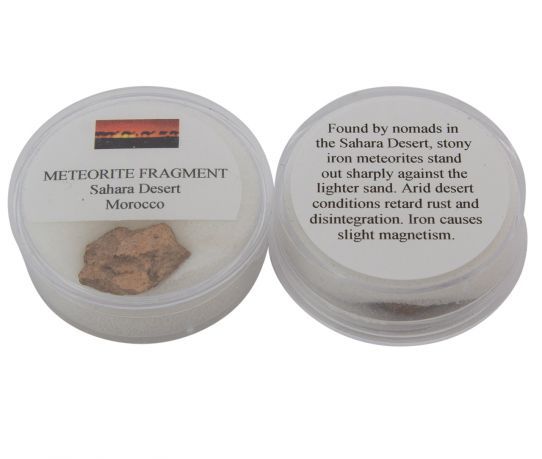We use cookies to make your experience better.
Meteorites from Sahara Desert (discovered by nomads in the 40-ies)
A meteorite is the part of a meteoroid impinges after it on the earth from space to have fallen through the atmosphere. During the trip through the atmosphere, the material is greatly slowed and very hot; this can be seen as a meteor. Essentially, a meteorite debris from space. On the basis of the composition of meteorites can sometimes be determined what the source is. For example, there are already more than twenty were found which are derived from the moon. This refers to material that another meteorite from the moon's out of control. There are also meteorites, such as ALH84001 found whose origin is Mars. In many cases, however, the meteorite came from the asteroid belt (also called asteroid belt) between Mars and Jupiter. Whether there meteorites consist of a cometary origin, is still under discussion. It is possible that some rare and very fragile species of carbonaceous meteorites of short-period comets originate. A lot of debris that comes in contact with the atmosphere does not reach the earth, but burns by the resistance of the atmosphere. The fragments that burn in the night visible as meteors, also called star rain or shooting star. For larger items that do not completely burn only partially as meteorites land on Earth, occurs when passing the atmosphere a bolide (fireball). That it can be an impressive phenomenon is apparent in the car of the Sikhote-Alin. That was very visible in full daylight. The fireball caused by the Dutch Glanerbrug meteorite from April 1990, just before sunset was visible.
The Sahara (Arabic: الصحراء الكبرى) is the largest sand desert on earth. He is located in North Africa and extends from Western Sahara to the Atlantic Ocean to Egypt on the Red Sea. On the north side, it is bordered by the Mediterranean and the Atlas Mountains. The south side is formed by the Sahel, an area that is slightly vegetated. The red mark on the accompanying map only indicates where the Sahara is located; The border is blurred. The name Sahara is derived from the Arabic word sahra, which means desert in general terms. Although today, the Sahara is a big desert, that was not always the case. During the Pleistocene and Holocene, the Sahara was still predominantly savannah, and many plant species were growing. During these periods, people could behave well in these areas as collector and hunter. The elephants, baboons, cats etc. probably believed to be in the Neolithic area today called the Sahara, and until a million years ago, there were still plants to be found only in wet, humid areas today or even in The tropics. In the Sahara, remains can be found from various human species, such as the Homo habilis and the Homo australiphithecus, probably more than five million years ago. In the present Sahara, up to two million years old stone tools can be found. Between 18,000 and 10,000 BC. Sahara experienced an extremely dry period in which the desert pulled further south. After 10,000 BC. The Sahara became more moist, and around 8,500 BC. The Holoceen sub-subsidiary begins, in which the Sahara had a considerably humid climate and a denser human population. About 6000-4000 years ago, an abrupt desert occurred in the Sahara and Arabia












